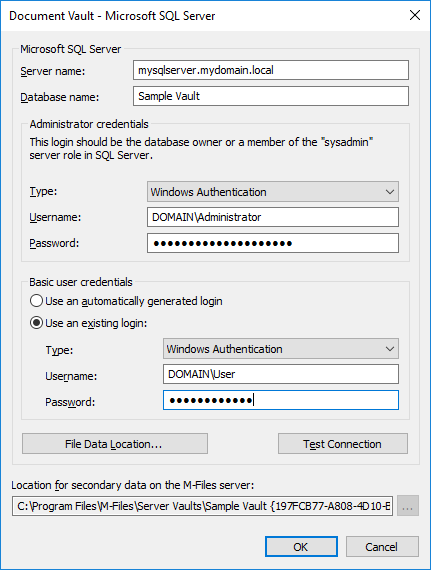Migrating the Vault Database to Microsoft SQL Server
Note: This content is no longer updated.
For the latest content, please go to the user guide for M-Files Online. For information on the supported product
versions, refer to our lifecycle policy.
M-Files uses Firebird as the default vault database engine. For vaults that contain several hundreds of thousands of objects, we recommend you to use Microsoft SQL Server. If a vault uses Firebird but the number of objects in the vault greatly increases, it can be beneficial to have the vault use Microsoft SQL Server as the database engine instead. You can migrate your vault database from Firebird to Microsoft SQL Server in M-Files Admin.
Note: You can only migrate the document vault
database engine from Firebird to Microsoft SQL Server. Migrations from Microsoft SQL Server to Firebird are not
supported.
- Your vault must currently use Firebird as the database engine.
- You must have a Microsoft SQL Server connection.
After the migration, the file data location is the same as with Firebird. If you want to change the file data location
before or after the migration, do these steps:
- Take the vault offline.
- Move the file data to a different location.
- Specify the location of the vault file data.
- Bring the vault back online.
To migrate your vault database from Firebird to Microsoft SQL Server:

